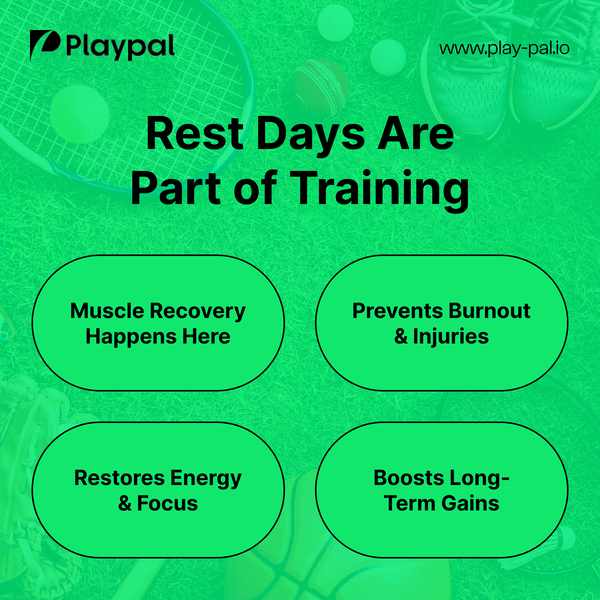In a world where fitness and sports performance are becoming more competitive and data-driven, athletes and fitness enthusiasts are constantly looking for ways to train smarter. The traditional "more is better" approach is quickly being replaced by intelligent, customized training strategies that help individuals achieve better results in less time. Smart training routines combine personalization, performance analytics, and technology-driven insights to elevate training outcomes while minimizing the risk of burnout and injury.
Whether you're an amateur athlete or a seasoned pro, embracing smart training can transform the way you approach fitness. Here’s how you can maximize gains with well-structured, intelligent routines that work with your body, not against it.
1. Understand Your Baseline First
Before beginning any training plan, it’s crucial to understand your current fitness level. Smart training begins with data—knowing where you stand in terms of endurance, strength, flexibility, and recovery. This helps in setting realistic goals and tracking progress.
Using tools like fitness trackers, performance analytics platforms, or mobile fitness apps, you can collect metrics such as heart rate variability, recovery time, movement patterns, and sleep quality. This foundational data provides valuable insights into what your body can handle and where improvements are needed.
2. Personalize Your Fitness Goals
A one-size-fits-all approach rarely works in fitness. Smart training routines revolve around personalized fitness goals that are tailored to your physical condition, objectives, and lifestyle. Whether you're aiming to build muscle, increase stamina, or enhance athletic performance, the key is to set specific, measurable, attainable, relevant, and time-bound (SMART) goals.
Personalization also considers factors such as training frequency, preferred workout types, and even the time of day when you perform best. AI-powered fitness apps can help create routines aligned with your body’s natural rhythms and unique performance metrics.
3. Leverage Data for Real-Time Feedback
One of the most powerful aspects of smart training is real-time performance feedback. Advanced sensors and wearables can now track your form, intensity, pace, and output during each session. This allows you to make immediate adjustments to improve performance and avoid injury.
Real-time feedback also fosters accountability. When you can see the impact of each session through performance dashboards, you're more likely to stay consistent and motivated. With accurate feedback loops, you're not just working harder—you’re working smarter.
4. Balance Intensity With Recovery
Maximizing gains doesn’t mean pushing your body to its limit every day. Overtraining is one of the most common reasons athletes plateau or suffer injuries. Smart training routines are designed with strategic rest and recovery periods that optimize results.
By monitoring recovery indicators like resting heart rate, sleep quality, and muscle soreness, you can schedule your workouts for peak effectiveness. This might include alternating high-intensity training (HIIT) with mobility-focused or low-impact sessions. Active recovery days are just as important as intense workouts.
Smart training routines integrate recovery insights so that you’re training in sync with your body’s readiness—not fighting against it.
5. Integrate Cross-Training for Holistic Gains
Focusing too narrowly on one activity or muscle group can lead to imbalances and limit your progress. Cross-training—where you combine different forms of exercise like strength training, cardio, flexibility, and mobility work—helps enhance overall athletic performance and reduces the risk of overuse injuries.
For example, runners can benefit from incorporating strength training and yoga, while weightlifters might gain from cardio intervals and functional movement drills. Smart training routines often include diverse activities to keep your body challenged and your mind engaged.
Cross-training not only improves overall conditioning but also keeps workouts fun and sustainable in the long run.
6. Use Performance Analytics to Track Progress
Tracking progress is essential for long-term success. Smart training incorporates performance analytics that give you insights into what’s working and what needs adjustment. These analytics might include:
-
Workout intensity and volume
-
Strength gains over time
-
Cardiovascular improvements
-
Speed and agility benchmarks
-
Recovery time comparisons
By consistently reviewing this data, you can make data-backed decisions to refine your routine. You can identify performance trends, overcome plateaus, and optimize your schedule for peak performance.
Many modern platforms provide visual dashboards and progress reports, making it easier to stay aligned with your fitness trajectory.
7. Maintain Mental Engagement
Consistency is key to making long-term gains, and mental engagement plays a vital role in staying consistent. Smart training routines often include motivational features such as milestone tracking, virtual coaching, gamified challenges, and personalized encouragement.
These elements help you stay focused and mentally invested in your training. Additionally, understanding the “why” behind each session helps build discipline. When your training is tied to clear goals and results you can measure, it’s easier to stay committed even when motivation wanes.
Staying engaged mentally is just as important as staying engaged physically.
8. Optimize Nutrition and Sleep
Training smart also means supporting your body outside the gym or the field. Nutrition and sleep are two pillars that directly influence your performance and recovery.
-
Nutrition: Fueling your body with the right nutrients pre- and post-workout enhances energy levels, recovery, and muscle growth. Smart training routines often integrate nutritional tracking or provide guidelines on macro- and micronutrient needs.
-
Sleep: Quality sleep boosts muscle recovery, hormone regulation, and mental clarity. Tracking sleep patterns and making adjustments to improve rest can significantly impact how well you perform during training sessions.
By optimizing these external factors, you’re ensuring your hard work translates into real gains.
9. Adapt and Evolve Over Time
Smart training is not static. As your fitness improves, your routines should evolve to match your new capabilities. Periodic assessments and recalibrations keep your routine fresh, challenging, and goal-oriented.
Adaptability means switching up exercises, increasing intensity, adjusting recovery times, or even changing goals as you progress. This dynamic approach keeps your body from adapting too easily and maintains steady improvements.
Many AI-driven platforms automatically update your routines based on progress data, eliminating guesswork and ensuring you stay on the right path.
Conclusion
Smart training routines are more than just a trend—they represent the future of fitness and performance enhancement. By integrating personalized planning, real-time feedback, balanced recovery, and performance analytics, athletes and everyday fitness enthusiasts can train more efficiently, avoid injuries, and achieve measurable results.
In a world full of fitness fads and short-lived motivation, smart training provides a sustainable, data-driven path to reaching your peak potential. It’s not about doing more; it’s about doing what works best for your body, goals, and lifestyle.
When you train smart, you don’t just work out—you evolve.





Leave a reply